Miriam Mafai | |
|---|---|
 | |
| Born | 2 February 1926 Florence, Italy |
| Died | 9 April 2012 (aged 86) Rome, Italy |
| Occupation | journalist |
Miriam Mafai (2 February 1926 - 9 April 2012) was an Italian journalist, author and politician.
Miriam Mafai | |
|---|---|
 | |
| Born | 2 February 1926 Florence, Italy |
| Died | 9 April 2012 (aged 86) Rome, Italy |
| Occupation | journalist |
Miriam Mafai (2 February 1926 - 9 April 2012) was an Italian journalist, author and politician.
Born in Florence, the daughter of the Scuola Romana artists Mario Mafai and Antonietta Raphaël and the sister of the politician Simona and of the scenographer Giulia , Mafai grew up in Rome but Italian racial laws forced her to move first in Viareggio and later in Genoa. [1] [2]
During the World War II together with her sisters she joined the Italian Communist Party and after the war became a party official and served as a Councillor of the Municipality of Pescara. [1] [3] She debuted as a journalist in 1956, working as a reporter for the magazine Vie Nuove . [1] [2] After working for L'Unità she was chief editor of the feminist magazine Noi donne between 1964 and 1969. [1] She was a co-founder of the newspaper La Repubblica , with which she collaborated until her death. [1] She was also active as an essayist, whose favorite themes were the role of women in the society and the history of Communism. [1] [3] In 2004 she briefly returned to the politics, being elected to the Chamber of Deputies with Democratic Alliance. [1]
During her career Mafai was the recipient of several accolades and honours, including the title of Grand Officer of Merit of the Italian Republic in 2003. [1] She had a long relationship with communist politician Giancarlo Pajetta, from 1962 until his death in 1990. [1] [4]

Aldo Romeo Luigi Moro was an Italian statesman and a prominent member of the Christian Democracy (DC). He served as prime minister of Italy from December 1963 to June 1968 and then from November 1974 to July 1976.

Amintore Fanfani was an Italian politician and statesman, who served as 32nd prime minister of Italy for five separate terms. He was one of the best-known Italian politicians after the Second World War and a historical figure of the left-wing faction of Christian Democracy. He is also considered one of the founders of the modern Italian centre-left.

Fernando Tambroni Armaroli was an Italian politician, member of the Christian Democracy, who served as 36th Prime Minister of Italy from March to July 1960. He also served as Minister of the Interior from July 1955 until February 1959, Minister of Budget and Treasury from February 1959 to March 1960 and Minister of the Merchant Navy from August 1953 until July 1955.

la Repubblica is an Italian daily general-interest newspaper. It was founded in 1976 in Rome by Gruppo Editoriale L'Espresso and led by Eugenio Scalfari, Carlo Caracciolo and Arnoldo Mondadori Editore. Born as a leftist newspaper, it has since moderated to a milder centre-left political stance, and moved further to the centre after the appointment of Maurizio Molinari as editor.

Antonio Tajani is an Italian politician, journalist and former Italian Air Force officer, who has served as Deputy Prime Minister of Italy and Minister of Foreign Affairs since 22 October 2022. He served as President of the European Parliament from 2017 to 2019, as European Commissioner from 2008 to 2014, and also as a member of the European Parliament from 1994 to 2008 and again from 2014 to 2022 until he was elected to Italy's Chamber of Deputies.
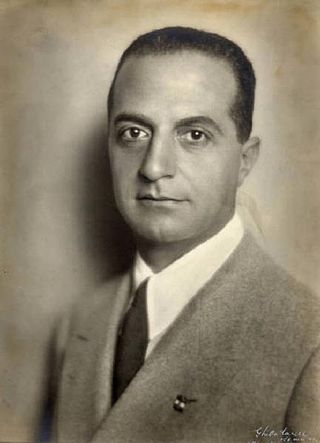
Giuseppe Bottai was an Italian journalist, and member of the National Fascist Party of Benito Mussolini.

Susanna Agnelli, Contessa Rattazzi,, was an Italian politician, businesswoman, and writer. Involved in Italian politics for over twenty years, she was the first woman to be appointed Italian Minister of Foreign Affairs. She was also the first Italian minister to be Minister of Foreign Affairs and undersecretary of the same ministry.

Leonilde Iotti, commonly known as Nilde Iotti was an Italian politician, member of the Italian Communist Party (PCI). She was the first and only woman member of the PCI to become the president of the Chamber of Deputies, an office she held for three consecutive legislatures from 1979 to 1992, becoming the longest-serving post-war president of the Chamber.

Vittorio Valletta was an Italian industrialist and president of Fiat S.p.A. from 1946 to 1966.

Giancarlo Pajetta was an Italian communist politician.

Walter Audisio was an Italian partisan and communist politician, also known by his nom de guerreColonel Valerio.

Vittorio Foa was an Italian politician, trade unionist, journalist and writer.
Secolo d'Italia is a daily, conservative, online newspaper in Italy, published since 1952, formerly supporting neo-fascism. In 2012, it ceased its print edition and continued as an online-only publication.

Antonietta Raphaël was an Italian sculptor and painter of Jewish heritage and Lithuanian birth, who founded the Scuola Romana movement together with her husband Mario Mafai. She was an artist characterised by a profound anti-academic conviction, also affirmed by her sculptures which, especially after World War II, dominated her output. They highlighted the tender and vibrant carnality present in stone, with works such as Miriam dormiente and Nemesis.
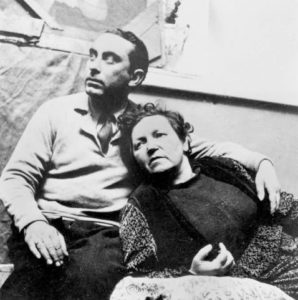
Mario Mafai was an Italian painter. With his wife Antonietta Raphaël he founded the modern art movement called the Scuola Romana, or Roman school.

Nicola Signorello was an Italian Christian Democracy politician and publicist.

Proletarian Democracy was a far-left political party in Italy.
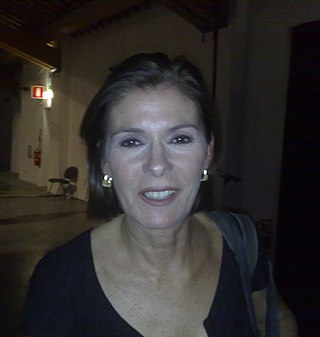
Bianca Maria Berlinguer is an Italian journalist. She was the director of TG3 from October 2009 to August 2016.
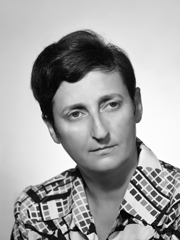
Simona Mafai De Pasquale was an Italian politician for the Communist Party (PCI). She was elected to the Senate of the Republic in 1976, serving until 1979.
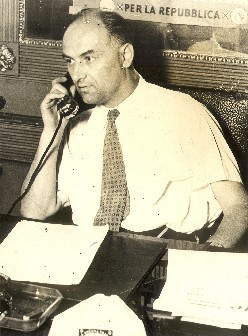
Celeste Negarville was an Italian communist, journalist and politician, first director of the post-war newspaper l'Unità and undersecretary for foreign affairs in the Parri and De Gasperi governments. He was born in Avigliana.